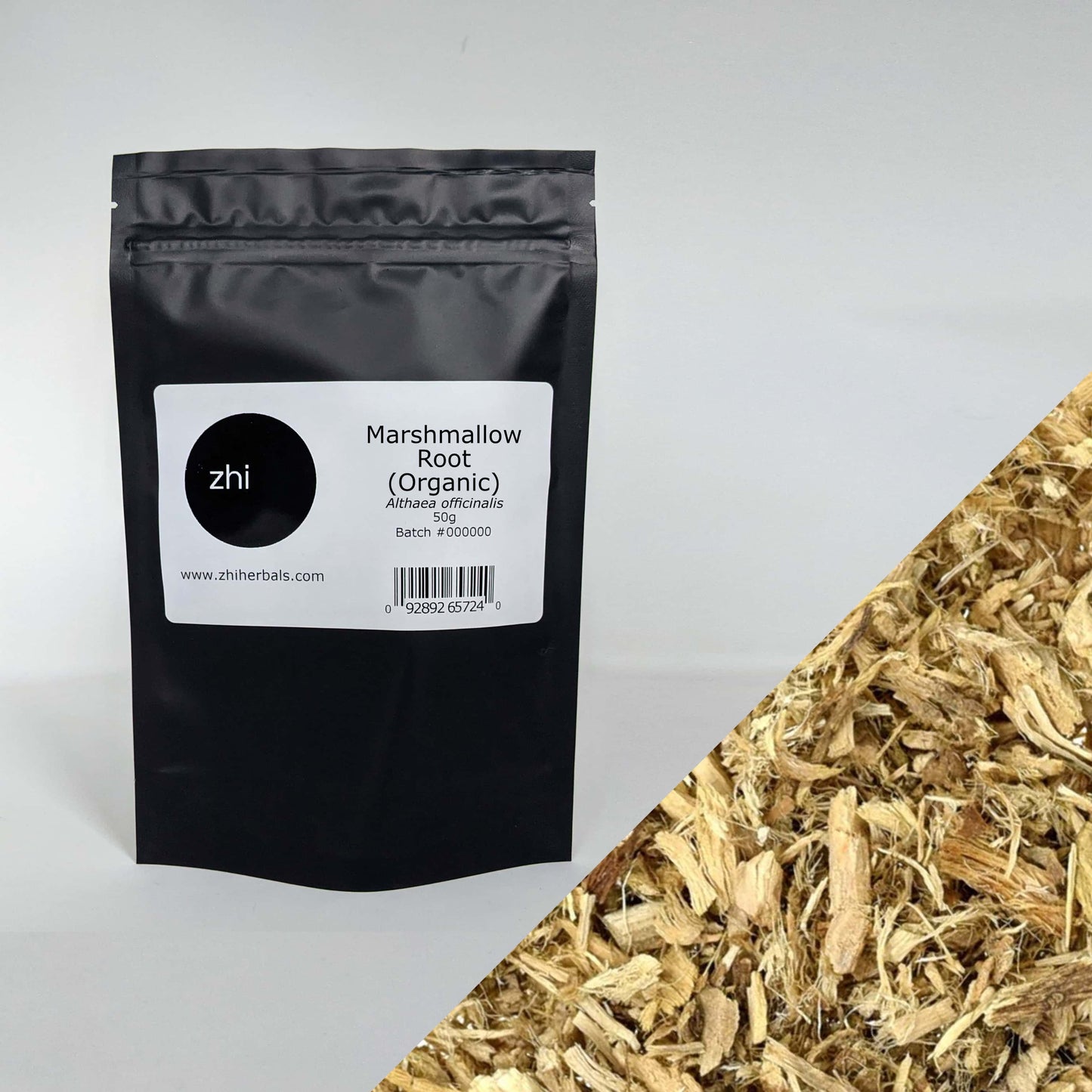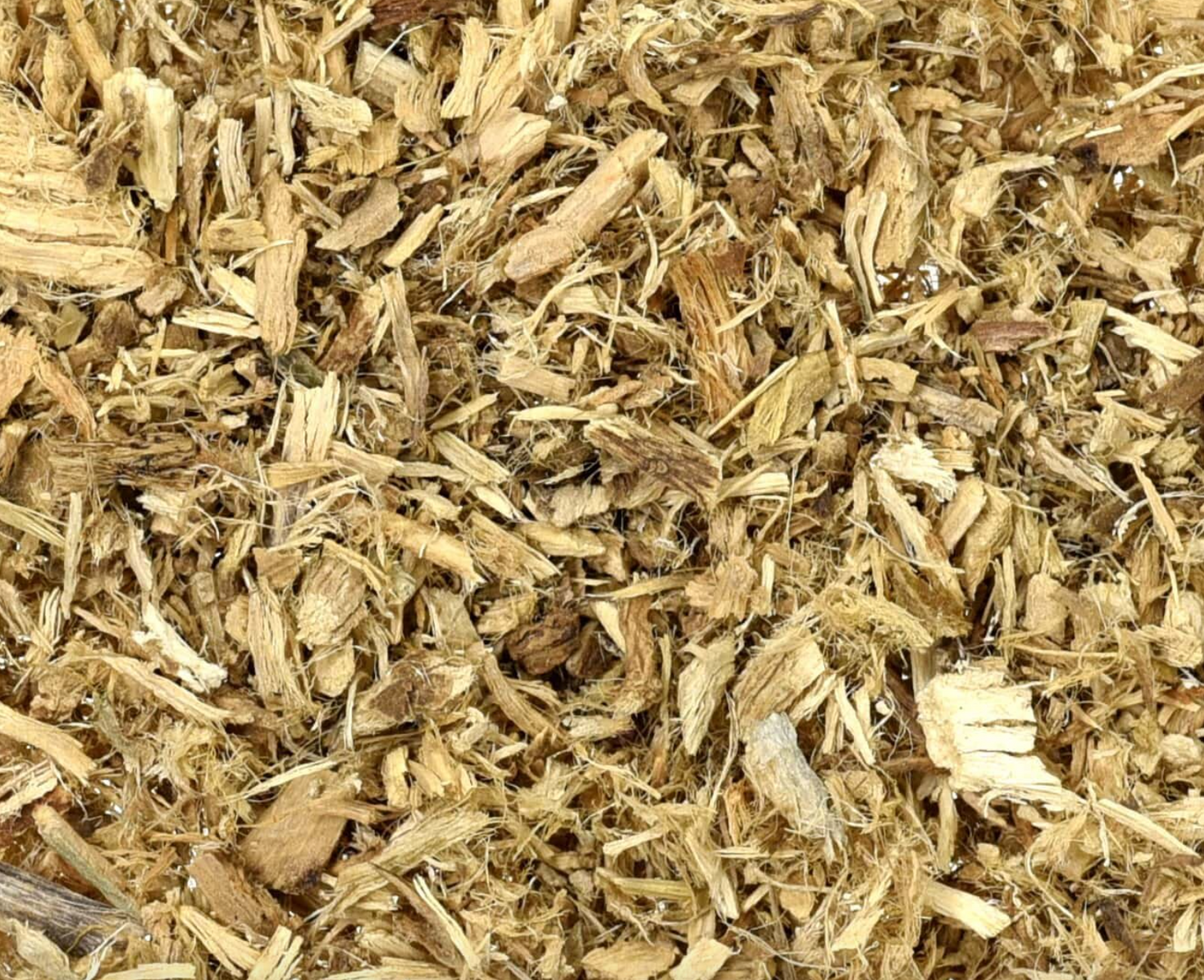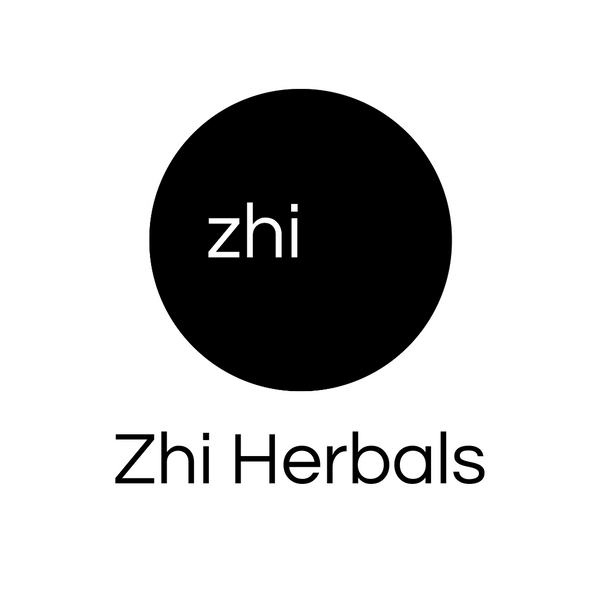Zhi Herbals
Marshmallow Root (Organic)
Marshmallow Root (Organic)
Couldn't load pickup availability
Common Name
Marshmallow, Mallow, Marshmellow, Althea, Althaea
Latin Name
Althaea officinalis
Origin
Croatia
What is Marshmallow Root?
Marshmallow root is a plant that has been used in natural remedies for over 2000 years. Ancient cultures, including Egyptian, Greek, and Roman, valued its benefits. The root contains mucilage, making it one of the best remedies for sore throat, dry cough, and acid reflux. In organic Ayurvedic care, marshmallow root is thought to help balance dryness (vata) and moisture (kapha). It is good for the gut, digestive system, and immune system.
How to Use Marshmallow Root (Common Uses)
Marshmallow root is safe for women, children, and even dogs. If you are pregnant, marshmallow root is likely safe, but we still recommend talking to your healthcare provider first. It is most commonly used as a tea, powder, extract, or in capsules. Some people make homemade balm or skin care recipes. It can also be used in cough suppressant syrups or mixed with slippery elm and licorice root for leaky gut support.
The taste of marshmallow root is mild, slightly sweet, and good for blending into organic herbal tea. Some people even make homemade marshmallows with it!
Visit our herbal blog for more information on learning how to use marshmallow root.
Medicinal Uses and Benefits of Marshmallow Root
Marshmallow root is best prepared as a tea or powder. It is often used for acid reflux, digestive conditions, and gut health. Boiling the root too long may destroy some of its benefits, so a warm or cold infusion is best. Marshmallow tea can be stored in the fridge and used for several days.
For respiratory health, marshmallow root is one of the best remedies for a sore throat, dry cough, and irritation. It coats the mouth, throat, and stomach, reducing acid reflux and ulcers. It is commonly used in cough syrups, throat lozenges, and digestive blends.
For skin care, marshmallow root is good for eczema, psoriasis, wound healing, and irritation. It is often found in balms, creams, and lotions. The anti-inflammatory effects are good for dry and sensitive skin.
For the urinary tract, marshmallow root can help with bladder irritation, urinary tract infections, and inflammation. Unlike other diuretics, it does not cause side effects. It is also commonly used in leaky gut treatment recipes.
Many people with acid reflux find that sipping marshmallow tea or drinking marshmallow powder mixed with water can provide relief. It coats the gut, soothes the digestive tract, and reduces stomach irritation.
Marshmallow root is a common ingredient in herbal preparations for supporting gut health and healing leaky gut. In herbal recipes for leaky gut, it is often combined with other irritation-reducing herbs such as turmeric root, licorice root, and slippery elm bark.
For coughing, marshmallow root is one of the best known cough remedies. It is a natural cough suppressant that can stop coughing and reduce throat irritation. Many homemade cough syrups include marshmallow root extract.
The powder is also used in homemade throat lozenges. Because marshmallow powder absorbs liquid, it binds ingredients together while providing medicinal benefits.
Marshmallow root is also good for hair care. It can help with dry scalp and irritation, and it is sometimes found in organic hair treatment products.
Active Constituents in Marshmallow Root
Mucilage polysaccharides, pectin, asparagine, tannins, flavonoids, coumarins.
Notable Facts About Marshmallow Root
- The name Althaea comes from the Greek word altheo, meaning "to heal."
- Marshmallow root has been used as food for centuries. In some cultures, it is cooked with onions and butter.
- The plant grows near wetlands and can reach 2-4 feet in height.
- The flowers of the mallow plant can be pink, blue, or purple.
- The root ranges from yellowish-brown to greyish-white.
- The leaves and root have similar benefits, but the root is stronger.
- We have multiple blog posts all about marshmallow root. Check out "Marshmallow Root Tea Recipes for Coughs" if you've got a sore throat, or "Marshmallow Root Benefits for Gut Health" if you'd like to know more about marshmallow root and digestion. We also have a more general article "What Is Marshmallow Root Good For?" if you just want to read more about the benefits.
Share


It's a best product what I so far bought, and also the delivery was fast. I'm very glad that I found this company.
I shop for my marshmallow root no where else. ZHI provides the best quality.


